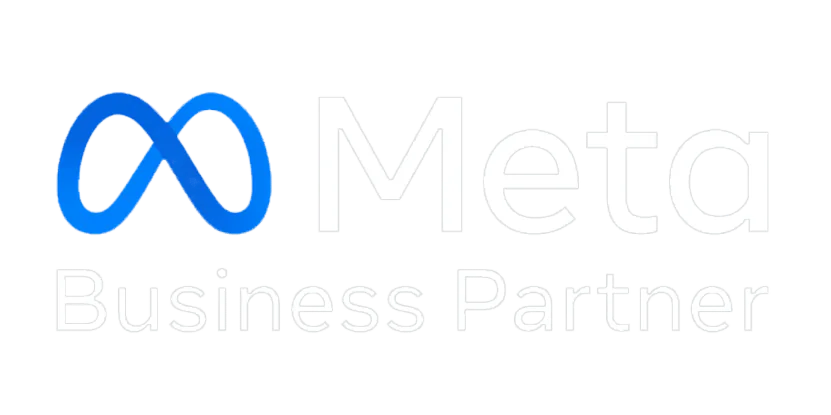Top 7 WhatsApp Drip Campaign Tools in 2025
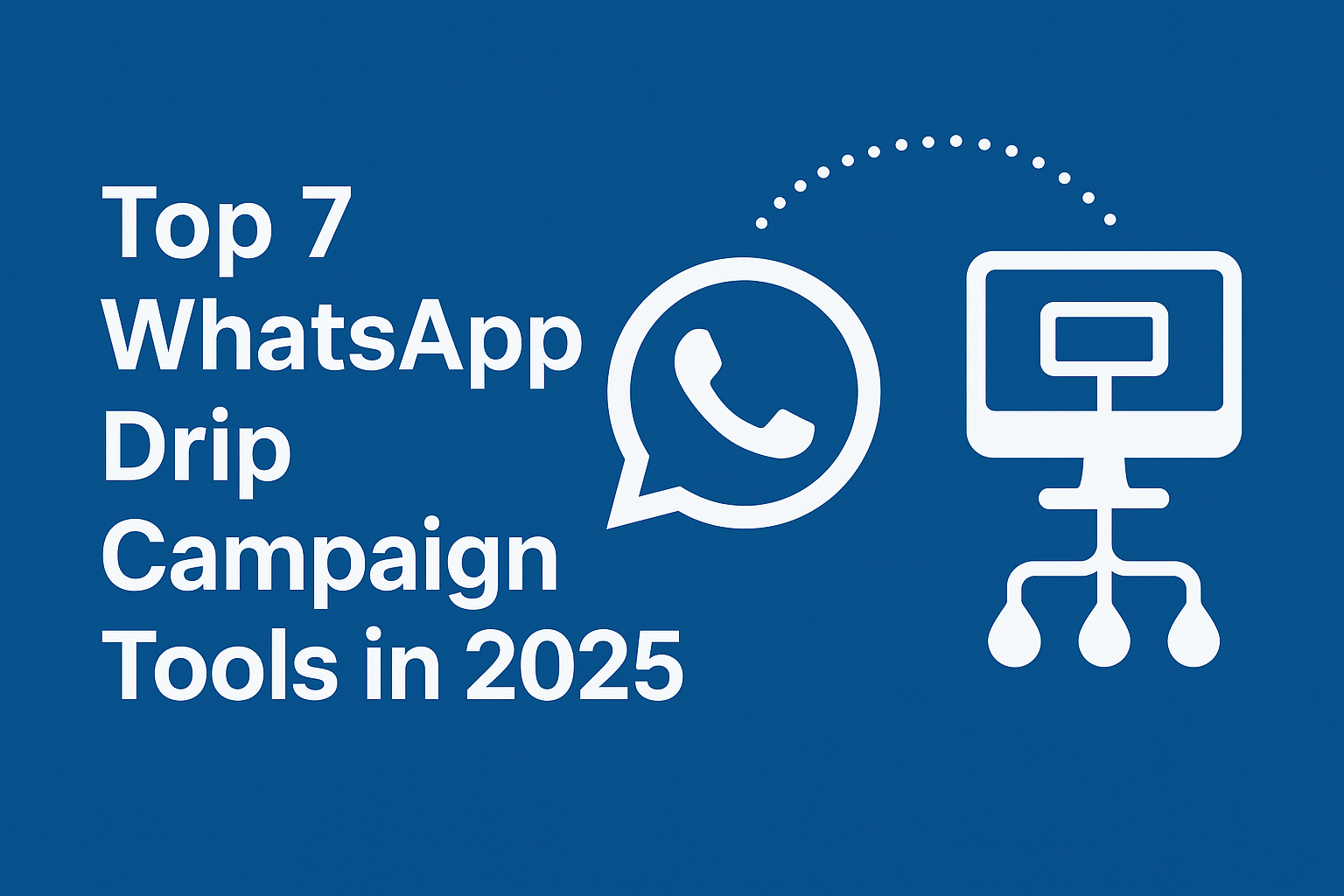
Introduction WhatsApp drip campaigns have become a game-changer for D2C and eCommerce brands. Instead of sending one-off broadcasts, businesses now automate personalized message sequences—whether it’s nurturing leads, reminding about abandoned carts, or driving repeat purchases. But with so many providers in the market, which tool should you choose?Here’s a list of the 7 best WhatsApp drip campaign tools in 2025—including a new player making waves: TheBotMode. 1. TheBotMode Best for D2C brands who want affordability + advanced automation TheBotMode is designed specifically for D2C and Shopify/WooCommerce merchants. Unlike most providers that only offer basic broadcasts, TheBotMode focuses on conversion-driven automation. Key Features 👉 Ideal for growing D2C brands who need results without burning budget. 2. Wati Best for businesses needing team inbox + automation Wati is a popular global WhatsApp solution. It combines team collaboration with drip campaign automation. Key Features 3. AiSensy Best for SMEs who want plug-and-play marketing AiSensy provides an easy dashboard for drip campaigns, WhatsApp broadcasts, and chatbots. It’s beginner-friendly, making it popular among SMEs and startups. Key Features 4. Interakt Best for WhatsApp CRM + simple automations Interakt offers a lightweight WhatsApp CRM with automation. It’s more suited for smaller businesses that need a WhatsApp-first customer management tool. Key Features 5. Gupshup Best for enterprises with custom integrations Gupshup is one of the oldest players in conversational messaging. It’s highly developer-friendly, with APIs for custom WhatsApp workflows. Key Features 6. Twilio Best for developers building from scratch Twilio provides flexible APIs for WhatsApp but requires coding to build drip campaigns. Great for businesses with in-house dev teams. Key Features 7. QuickReply.ai Best for Shopify merchants with advanced workflows QuickReply.ai is a specialized WhatsApp automation platform for Shopify. It has APIs to trigger drip campaigns and segment customers dynamically. Key Features Conclusion Choosing the right WhatsApp drip campaign tool depends on your business size, budget, and goals. 👉 In 2025, the real winners will be brands that combine automation + personalization, and TheBotMode is built exactly for that.
What Are WhatsApp Opt-Ins and Why Your Business Needs Them
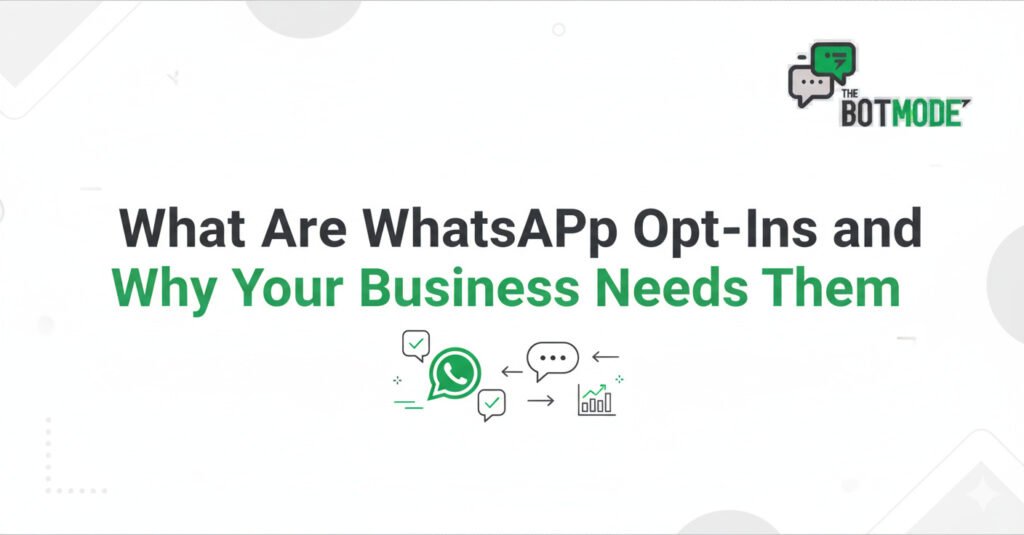
A WhatsApp opt-in is explicit permission from a person to receive messages from your business on WhatsApp. Without it, you cannot send business-initiated messages (marketing, utility, authentication). Your opt-in must clearly mention WhatsApp, name your business, set expectations, and offer a simple opt-out. In India, align consent with DPDP principles (freely given, specific, informed, unambiguous, and revocable). What exactly is a WhatsApp opt-in? A WhatsApp opt-in is a user’s explicit consent that authorizes you to contact them on WhatsApp outside the 24-hour service window. A valid opt-in should: Why your business needs opt-ins What counts as a valid opt-in? High-intent places to collect WhatsApp opt-ins India checklist: DPDP-ready consent Template categories & expectation setting The BotMode way: compliant opt-ins that convert Copy-paste consent examples Website checkbox (short): “I agree to get order updates, reminders, and offers on WhatsApp from TheBotMode. Opt out anytime.” Popup (value-led): “Get shipping alerts + exclusive offers on WhatsApp from The BotMode. Reply STOP to unsubscribe.” WhatsApp confirmation (double opt-in): “Confirm you’d like to receive order updates and offers from The BotMode on WhatsApp. Reply YES to confirm or STOP to opt out.” What to store for every opt-in FAQs 1) Can I message someone first without opt-in? No. You need opt-in for business-initiated messages. You can reply within 24 hours of a user’s inbound message for service conversations. 2) Does a user saying “Hi” count as opt-in? No. It only opens a 24-hour service window for support; future business-initiated messages still require opt-in. 3) What should my opt-out flow look like? Accept STOP/UNSUBSCRIBE in WhatsApp and propagate the suppression to all tools, segments, and data stores. 4) What’s specific to India? Follow DPDP principles: ensure consent is freely given, specific, informed, unambiguous, and easy to withdraw.
Retail & E-commerce: Driving More Repeat Sales Through WhatsApp Messaging
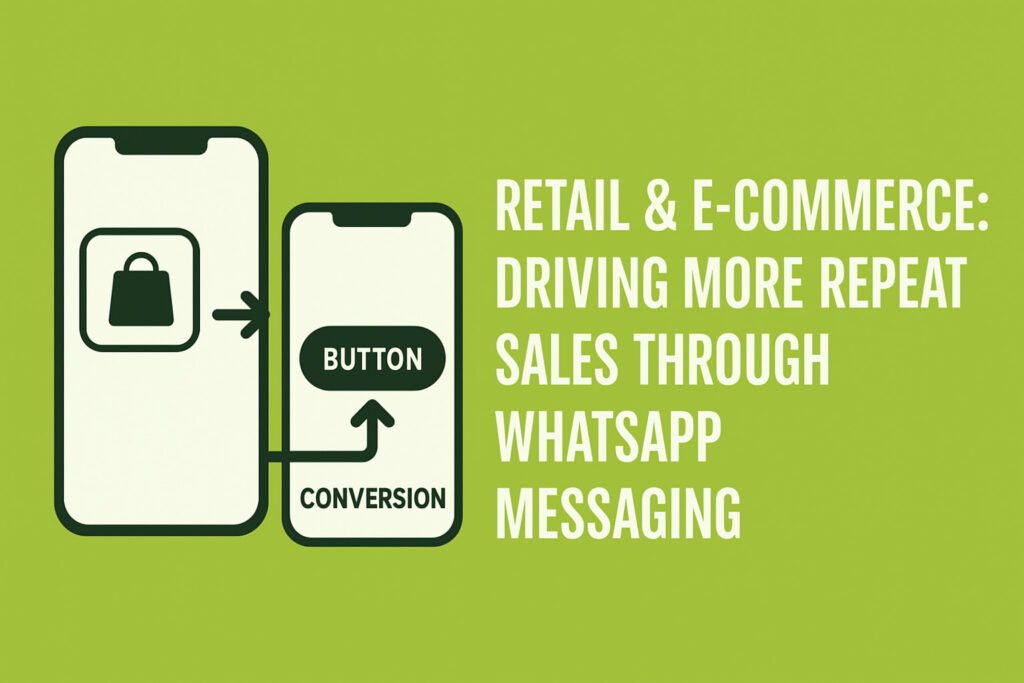
Why Repeat Sales Matter for D2C & eCommerce Brands For D2C and eCommerce businesses, repeat customers are the backbone of growth. Acquiring new customers is expensive, but retaining them can increase profits by up to 25–95% (Harvard Business Review). WhatsApp Business API is now the preferred channel for building these loyal, long-term customer relationships. At The BotMode, we’ve seen brands double their retention and repeat order rates by strategically using WhatsApp automation. Let’s break down how you can do the same. Why WhatsApp is Perfect for Driving Repeat Sales Here are five reasons why WhatsApp outperforms email and SMS for retention: WhatsApp Strategies for Building Strong Customer Relationships Personalized Recommendations 72% of customers engage more with personalized WhatsApp campaigns. Use customer data to send tailored offers that make them feel valued. Loyalty Programs & Exclusive Offers Deliver VIP access to sales, points updates, or birthday discounts via WhatsApp – more personal than email. Post-Purchase Engagement Confirm orders instantly, share delivery updates, and request feedback. Example: Perfora (oral care brand) collects 2x more feedback on WhatsApp vs. email. Interactive Content Polls, quizzes, or product tutorials keep engagement high while also giving insights into customer needs. Customer Support & Assistance Faster query resolution and guided shopping directly on WhatsApp improve satisfaction and repeat orders. How to Automate Repeat Sales on WhatsApp Tracking Success of WhatsApp Repeat Sales Key Metrics – Repeat purchase rate, retention %, open & click rates, revenue from repeat customers.UTM Tracking – Add UTM parameters to WhatsApp links to track conversions inside Google Analytics.Customer Feedback – Collect ratings, NPS, and product reviews directly via WhatsApp surveys.A/B Testing – Test message timings, templates, and offers to see what drives the most repeat sales. WhatsApp + CRM + Shopify/WooCommerce = Retention Machine Integrate WhatsApp with your CRM (Zoho, HubSpot, Salesforce) and your eCommerce store (Shopify/WooCommerce). This ensures: At The BotMode, we specialize in connecting WhatsApp Business API with your eCommerce stack so you can run these campaigns seamlessly. Conclusion For D2C brands, repeat sales = sustainable growth. WhatsApp isn’t just another channel – it’s the fastest, most personal, and most engaging way to build customer loyalty at scale. With automation + personalization, you can turn first-time buyers into lifelong customers. Ready to drive more repeat sales for your brand?Talk to The BotMode Experts Today FAQs Q1: How can WhatsApp help increase repeat sales for D2C brands? WhatsApp enables direct, personalized, and interactive communication that improves retention, loyalty, and reordering. Q2: Is WhatsApp better than email for customer retention? Yes. With a 98% open rate, WhatsApp ensures your messages are seen, unlike email’s ~20%. Q3: Can I automate WhatsApp reordering reminders? Yes. With tools like The BotMode, you can automate reordering flows, subscription alerts, and reminders. Q4: How do I measure repeat sales from WhatsApp campaigns? Track metrics like repeat purchase rate, revenue contribution, CTRs, and use UTM tracking for campaign attribution. Q5: Which platforms integrate with WhatsApp for repeat sales? Shopify, WooCommerce, Magento, and CRMs like Zoho and HubSpot can easily integrate with WhatsApp Business API.
Abandoned Cart Reminders That Work: Best Practices for D2C Marketing
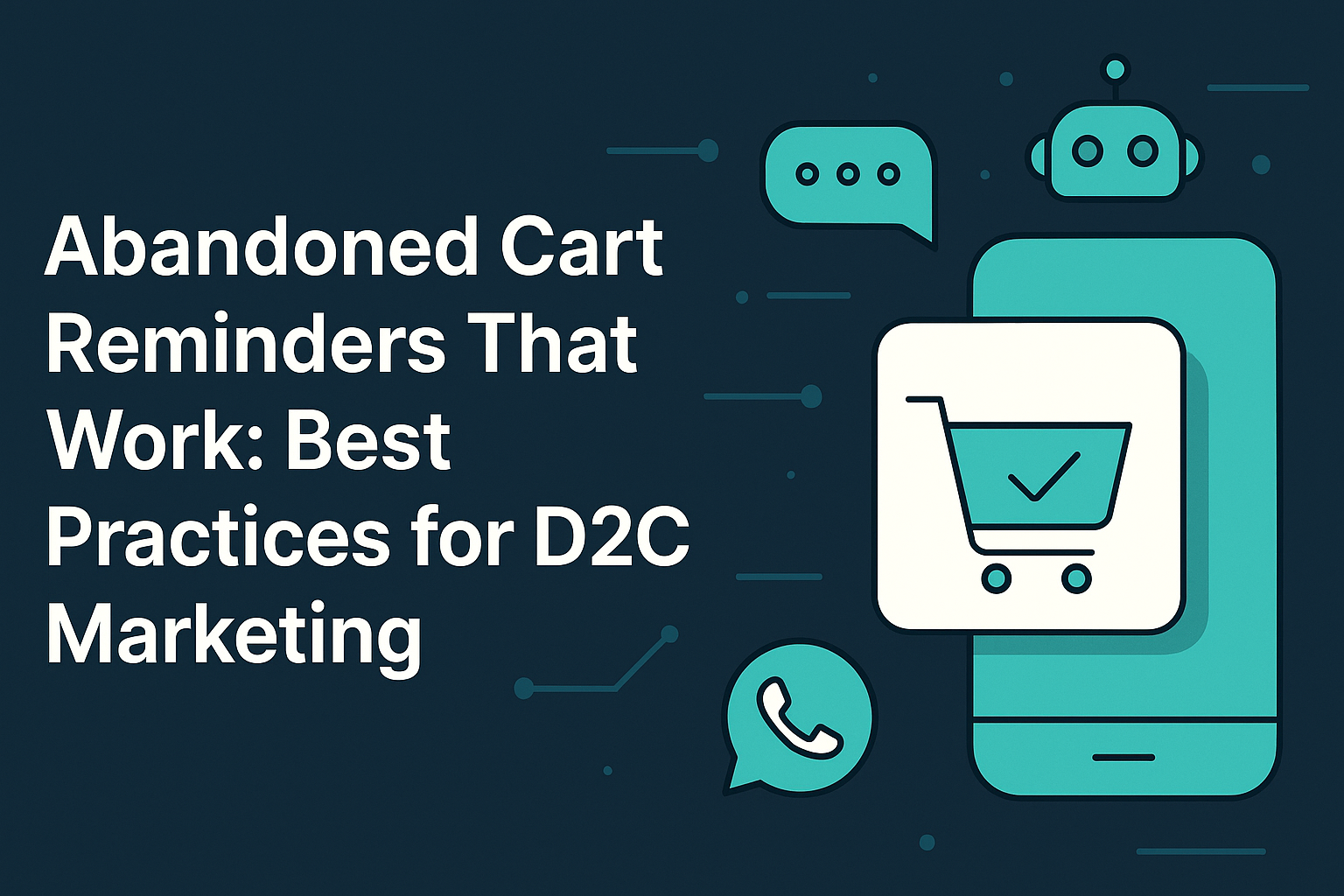
Introduction Every D2C brand faces it: potential customers fill their carts… then leave. These abandoned carts represent huge opportunity costs—but also big chances. An effective abandoned cart reminder strategy can convert a large chunk of that lost revenue. In this article, you’ll find best practices for abandoned cart reminders that work. We’ll cover: If you want, after reading this, you can also explore how TheBotMode helps with abandoned cart recovery. Why Carts Get Abandoned (So Your Reminders Hit the Right Pain Points) Understanding why people abandon carts is crucial to crafting reminders that resonate. Some of the top reasons are: Some stats to keep in mind: These numbers show two things: the scale of the problem and the real potential of good recovery/reminder strategies. Best Practices for Abandoned Cart Reminders Here are proven best practices D2C brands should adopt to make reminders effective. Timing & Frequency Channel Mix: Email, SMS, Push & WhatsApp Personalization & Content Incentives & Urgency Clear CTAs & Trust Factors Design & Mobile Optimization WhatsApp‑Specific Tips for Cart Recovery Since this channel is becoming indispensable, here are some deep‑dive best practices for WhatsApp cart recovery: Tracking, Measuring & A/B Testing To ensure your abandoned cart reminders keep improving, you need to track and test: Common Pitfalls & How to Avoid Them Tools & Platforms for Abandoned Cart Recovery Here are features or tools to look for (or that you might already be using or considering): Conclusion Abandoned carts are not just lost sales—they’re clues. When optimized, reminders are one of the highest‑ROI levers for D2C brands.The keys: If you’re ready to reclaim lost revenue, start by auditing your current abandoned cart flow, test one change at a time, and you’ll see improvements. For help getting started, check out our internal guide: Abandoned Cart Recovery. FAQs Q1: What is a good benchmark recovery rate for abandoned carts? A typical recovery rate ranges between 10‑30%, depending on industry, channel mix, and how well optimized your reminder flows are. Using channels with higher engagement, like WhatsApp, and well‑timed, personalized messages, helps push the rate toward the higher end. Q2: How many abandoned cart reminders should I send? Usually, 2‑3 reminders per cart work well. For example: one at ~1 hour after cart abandonment, another 12‑24 hours later, and possibly a third after about 24‑48 hours, with a stronger incentive if needed. Q3: Should I always offer a discount in the reminder messages? Not always. Discounts can help move customers, but overuse can erode margins or train customers to abandon carts in expectation of discounts. Offer incentives judiciously—especially for high‑value carts or when earlier reminders haven’t worked. Q4: Is WhatsApp more effective than email? It depends on your audience and context. WhatsApp typically has much higher open and engagement rates, more immediacy, and a conversational tone. But not everyone provides a WhatsApp contact, or opts in. Email remains important. A combined or multi‑channel flow usually works best. Q5: How do I ensure reminders comply with privacy laws? Ensure proper opt‑in permissions for channels like WhatsApp and SMS. Be clear about what messages you’ll send. Allow opt‐out. Store and handle personal data (names, contacts) securely. Be aware of GDPR, local privacy/data protection laws in your target markets.
How to Segment Your WhatsApp Audience for Smarter Marketing in 2025
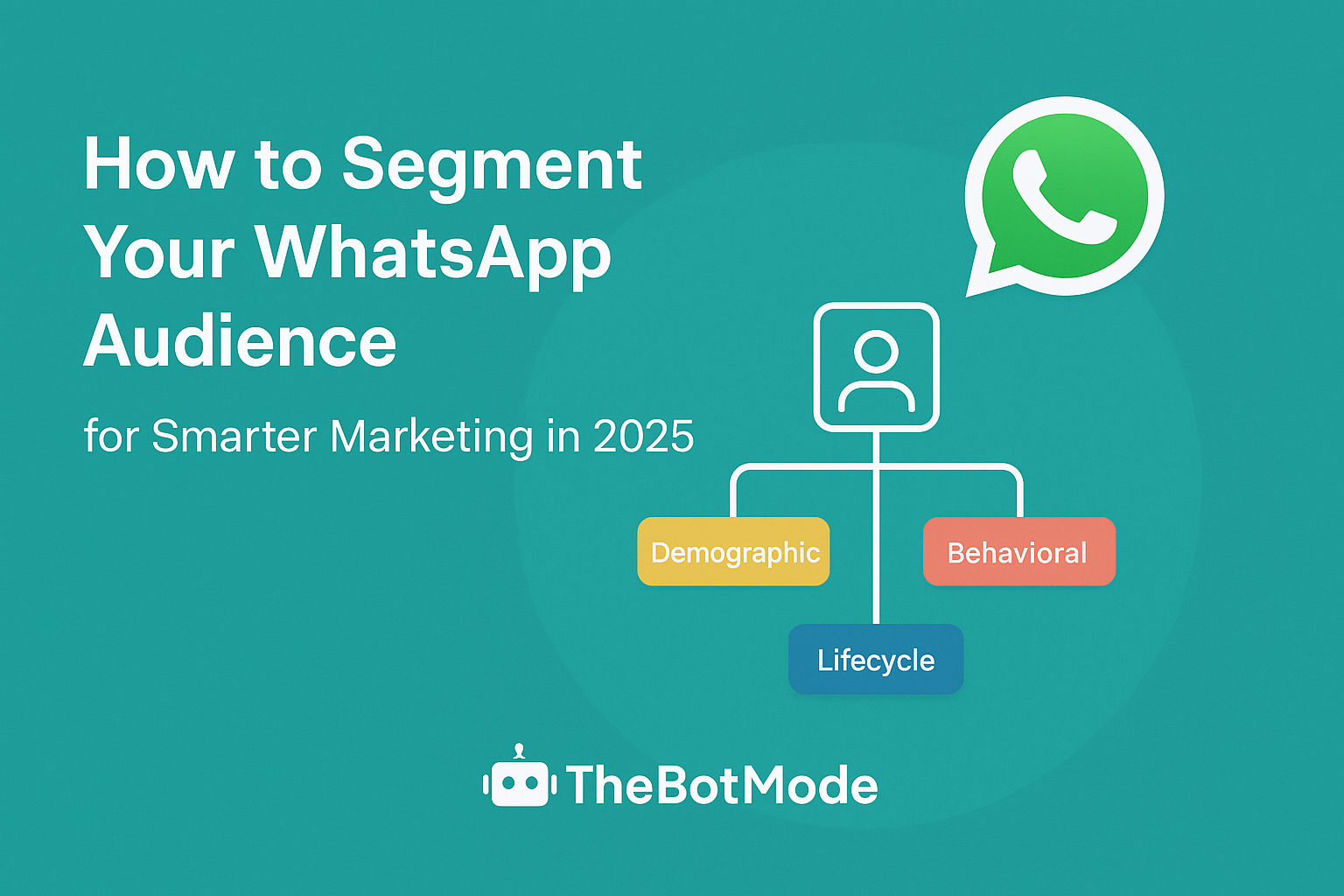
Introduction WhatsApp is no longer just a chat app—it’s one of the most effective channels for businesses to engage, convert, and retain customers. With almost 3 billion monthly active users globally and staggering open rates, WhatsApp messages land where people are already spending their attention. But sending generic mass messages just won’t cut it in 2025. The expectation from users is relevance, timeliness, and value. That’s where segmentation comes in—a strategic way to organize your audience into meaningful groups so you can send smarter messages. At TheBotMode.com, we believe segmentation is the backbone of effective WhatsApp marketing. In this article, you’ll discover how to define segments, set them up using TheBotMode’s tools, and measure their impact to grow traffic, engagement, and ROI. Why Segmenting Your WhatsApp Audience Matters More Than Ever Key WhatsApp Segmentation Types to Use in 2025 Here are the most relevant segmentation types in 2025, especially when backed by tools like TheBotMode: Segment Type What It Means Use Case / How TheBotMode Helps Demographic Age, gender, location, language, job role Use forms/chatbot at the opt‑in stage to collect this info, tag users accordingly for region‑based offers, multilingual campaigns. Geographic Country, city, region, timezone Schedule messages when they’re awake & receptive, run local promotions or events. Behavioral What a user does: clicks, opens, messages, purchases, cart abandonment, etc. Trigger follow‑ups for cart abandoners, reward frequent readers or purchasers. The BotMode can track behaviors via flows & tags. Lifecycle / Funnel Stage Where a user is: lead, new customer, repeat customer, inactive, churned Different nurture flows: onboarding for new, loyalty or VIP offers for repeat, and win‑back for inactive. Value‑Based High customer lifetime value vs casual buyer; order size; frequency Prioritize high‑value segment for exclusive offers, early access, VIP content. Interest‑Based / Psychographic Interests, attitudes, preferences, product types Use polls, chat responses to build interest tags; tailor content accordingly. How to Set Up Segmentation with TheBotMode Here’s a step‑by‑step guide to using segmentation features effectively with TheBotMode.com: Real‑World WhatsApp Segmentation Use Cases Here are examples of segments and what you can do with them: Common Segmentation Mistakes to Avoid Tracking Success & Improving Results How TheBotMode Supercharges WhatsApp Segmentation Here’s how TheBotMode.com makes segmentation practical, actionable, and powerful: Want to try this in action? You can start with one segment today (say, cart abandoners or new leads), use TheBotMode’s tagging and flow builder, and send a simple targeted broadcast. You’ll often see uplift even with small changes. Conclusion Segmentation isn’t optional—it’s essential in 2025 if you want WhatsApp marketing that’s relevant, efficient, and high‑performing. When you segment wisely, you improve engagement, boost conversions, reduce unsubscribes, and make better use of your time and budget. At TheBotMode.com, you have the tools you need to define meaningful segments, build dynamic flows, and analyze what works. Your next step? Pick one segment (new leads, inactive users, or VIPs), design a targeted message flow, test it, measure results—and iterate. Call to Action: Head over to TheBotMode.com, explore our segmentation features, and launch your first smart WhatsApp campaign today. FAQs Q: What’s the best way to segment WhatsApp contacts in 2025? A: Start with lifecycle or behavior‑based segments (new leads, inactive users, high‑value customers) using tags, followed by interest and demographic segmentation once you have enough data. Q: How can I personalize messages in WhatsApp marketing without being intrusive? A: Use snippets like name, past purchase, or preferences. Offer value (help, tips, offers) rather than just promotions. Respect timing & frequency. Always give the opt‑out. Q: Can small businesses benefit from segmentation, or is it only for large enterprises? A: Yes—small businesses gain big from even simple segmentation. Even creating just 2‑3 segments (e.g., new vs. returning customers) can boost engagement and ROI. Q: Is segmentation possible if I’m using WhatsApp Business (app) vs. API? A: Yes—while the API gives more automation & integration capacities, you can still use tags and segment manually via the Business App or TheBotMode’s tools. Many segmentation workflows don’t need the full API. Q: How often should I update or refresh my segments? A: Behavior or engagement-based segments—weekly (or even real‑time if possible); lifecycle/funnel segments—monthly or when data from CRM triggers a shift. Always review performance and adapt.
How D2C Brands Can Recover More Revenue with Abandoned Cart Strategies
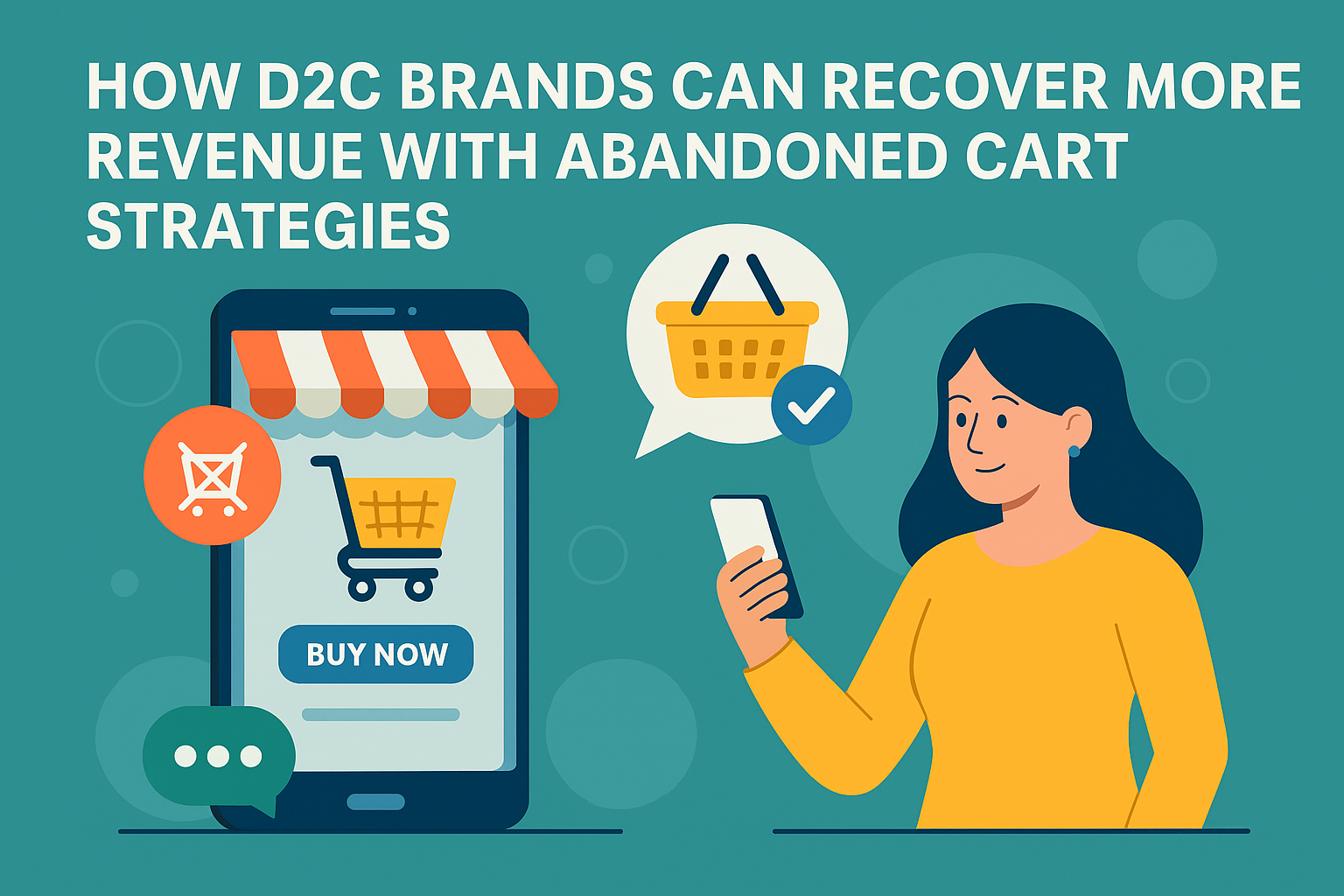
Why Abandoned Cart Recovery Is Mission-Critical for D2C Brands In today’s competitive D2C landscape, every cart left behind is a missed opportunity—and they’re happening a lot. Studies show nearly 7 out of 10 online shopping carts are abandoned, often before customers even begin the checkout process. For D2C brands, this represents millions in lost revenue, wasted ad spend, and a significant drop in customer lifetime value. But here’s the good news: a strong abandoned cart recovery strategy can turn those losses into reliable revenue. And the best part? You don’t need to rely solely on email anymore. Tools like WhatsApp Business, the WhatsApp Business API, and smart message automation are rewriting the rules of cart recovery. Why Are Customers Abandoning Carts? Before you solve the problem, you need to understand it. The most common reasons for cart abandonment include: While these issues can’t be eliminated entirely, timely and personalized outreach can help pull customers back in—and WhatsApp is one of the best platforms to do it. Why WhatsApp Is a Game-Changer for Cart Recovery 1. Instant Visibility and Engagement Traditional email reminders often get ignored or filtered. In contrast, WhatsApp messages have a 98% open rate—and are usually read within the first 5 minutes. That immediacy creates a powerful opportunity for recovery. 2. WhatsApp Business vs WhatsApp Business API 3. Build Trust Through Humanized Automation With the WhatsApp chatbot, you can answer real-time queries, ease purchasing anxiety, and recover sales 24/7—without lifting a finger. It’s automation that feels human. Key Components of a Winning WhatsApp Cart Recovery Strategy Perfect Your Timing Timing is everything. Your recovery flow should include: Segment for Precision One-size-fits-all messaging won’t cut it. Segment customers based on: Then tailor your whatsapp message marketing strategy accordingly. Message Content That Converts What makes an effective cart recovery message? 👉 Abandoned Cart Recovery FAQs (Optimized for Voice Search & Featured Snippets) Q1: What is WhatsApp Business used for in eCommerce? WhatsApp Business helps brands automate customer engagement, support, and cart recovery—leading to higher conversions. Q2: Is the WhatsApp Business API necessary for abandoned cart automation? Yes. The API enables scalable automation, chatbot integration, and customized cart recovery messaging. Q3: Do WhatsApp chatbots really work for recovering abandoned carts? Absolutely. They handle objections, provide support, and close sales—24/7, instantly. Q4: How effective is WhatsApp compared to email for cart recovery? WhatsApp outperforms email with open rates of 98% and click-through rates over 35%, making it ideal for recovery. Q5: Can I use WhatsApp marketing without spamming customers? Yes. As long as you use opt-in and approved templates, WhatsApp marketing remains non-intrusive and valuable.
How to Verify Your WhatsApp Business Account
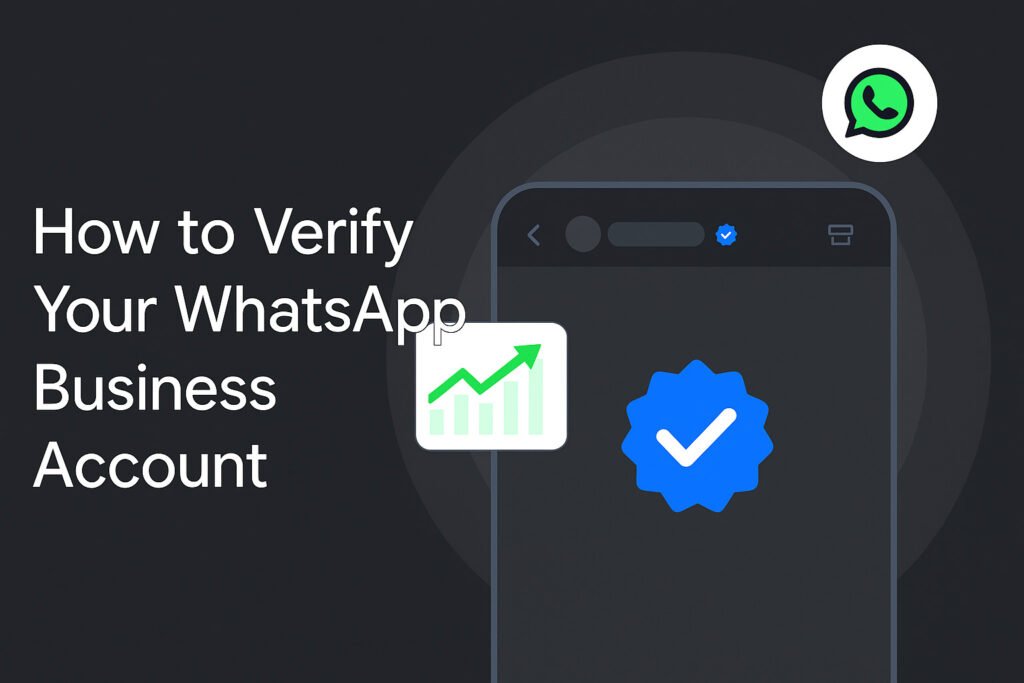
Introduction For businesses worldwide, WhatsApp Business has become a key tool to connect with customers directly, share updates, and build trust. But simply setting up a WhatsApp Business account is not enough. To unlock advanced features like the green tick verification badge, higher trust levels, and full WhatsApp Business API access, you need to verify your WhatsApp Business Account. In this guide, we’ll explain step by step how to verify your WhatsApp Business Account, why it matters, and how local businesses across regions can benefit. Why WhatsApp Business Verification is Important Step-by-Step Guide to Verify Your WhatsApp Business Account 1. Set Up a Meta Business Manager Account 2. Add Your Business Details 3. Verify Your Business in Meta Business Manager 4. Connect Your WhatsApp Business Account 5. Request WhatsApp Business Verification 6. Await Approval Specific Notes Tip: Always ensure your submitted business name matches exactly with your supporting documents. Common Reasons for Rejection FAQs Q1. Do I need a green tick to use WhatsApp Business API? No. You can use the API without the green tick, but the tick improves brand trust. Q2. How long does verification take? Typically 3–7 business days for Meta verification, plus 1–2 weeks for WhatsApp verification. Q3. Can small businesses also get verified? Yes, but ensure you have a professional website and proper documents. Q4. What if my request is rejected? You can reapply after 30 days with corrected or updated documents. Conclusion Verifying your WhatsApp Business Account is a must if you want to build customer trust, unlock advanced messaging features, and scale your business globally. By following the steps above and preparing the right documents based on your country, you can complete the process smoothly and increase your brand’s credibility. If you are a D2C brand, startup, or local business looking to automate and grow with WhatsApp, consider setting up your verification early.
Unlocking Growth: WhatsApp Marketing Strategies for D2C Brands
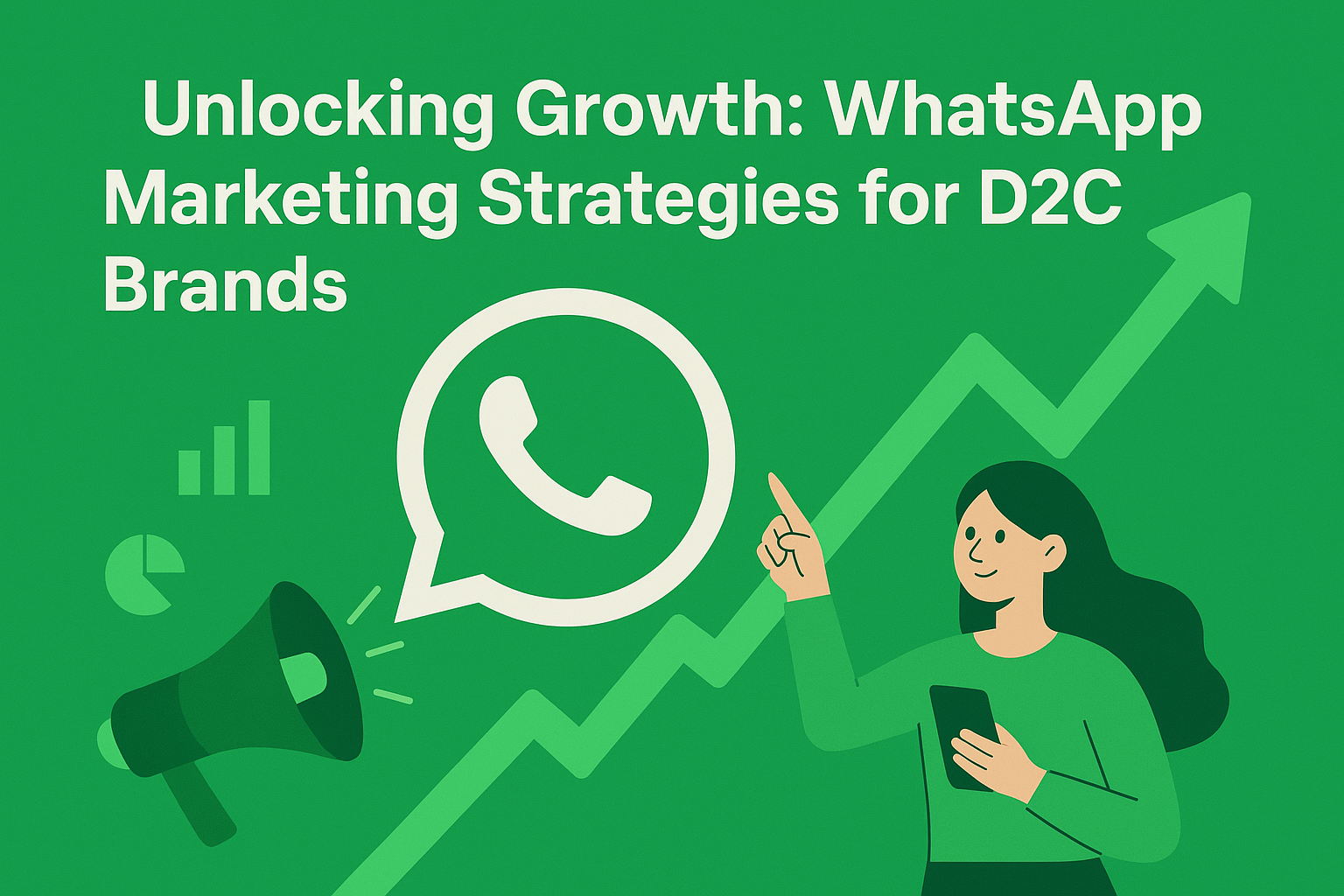
Introduction D2C (Direct-to-Consumer) brands are redefining the retail landscape by eliminating middlemen and connecting directly with consumers. But with great access comes intense competition. To stand out, brands must embrace highly personalized, real-time communication. That’s where WhatsApp marketing becomes a game-changer. With over 2 billion users globally and open rates exceeding 98%, WhatsApp offers D2C brands a direct line to customers’ hearts—and wallets. In this blog, we explore effective strategies using WhatsApp Business, WhatsApp Business API, chatbots, and message marketing to drive traffic, increase conversions, and build loyalty. What Makes WhatsApp a Powerful Tool for D2C Brands WhatsApp Business & WhatsApp Business API: Understanding the Difference Pro Tip: If you’re scaling operations or managing hundreds of orders and support queries daily, upgrade to the API to streamline everything. Key Statistics that Prove WhatsApp Marketing Works Core WhatsApp Marketing Strategies for D2C Brands Personalization via Chat and Conversational Selling Using a WhatsApp chatbot, you can instantly assist users with product queries, offer suggestions, or even walk them through checkout—all while maintaining a human-like interaction. Combine this with customer segmentation to tailor messages based on behavior, purchase history, or preferences. Automated Messages & Notifications (Using WhatsApp Business API) Send real-time order updates, shipping alerts, and abandoned cart reminders using API-approved message templates. Automating these messages boosts engagement and reduces customer support load. Drip Campaigns, Broadcasts & Segmented Message Marketing Broadcast promotional messages or run drip campaigns to specific customer segments: Chatbots: 24/7 Support at Scale Automate responses to FAQs, product inquiries, and return policies using AI-powered chatbots. Enable human handoff for complex issues to maintain a seamless support experience. Integrations: CRM, E-commerce, Analytics Integrate WhatsApp API with platforms like Shopify, WooCommerce, and your CRM to: Conclusion For D2C brands looking to grow in 2025 and beyond, WhatsApp marketing isn’t just an option—it’s a necessity. With the right strategy and tools, you can enhance customer experience, reduce cart abandonment, and turn casual browsers into loyal buyers. Start small—send order updates or a welcome series—then scale with chatbots, API automation, and targeted campaigns. When done right, WhatsApp becomes your most personal and powerful marketing channel. 👉 Explore your options with TheBotMode and take your first step toward smarter customer conversations. FAQs Q 1. What is WhatsApp Business API and how is it different from the regular app? The API is built for scale—it offers bulk messaging, chatbot integration, and analytics. The regular app is more manual and suited for small teams. Q 2. How can a chatbot help my D2C brand on WhatsApp? A chatbot provides 24/7 support, handles repetitive queries, recommends products, and improves conversion through guided shopping. Q 3.What metrics should I track for WhatsApp marketing? Focus on open rates, response time, conversion rate, average order value, and repeat purchase rate. Q 4. How many marketing messages can I send without annoying customers? Stick to 1-3 high-value messages per week. Prioritize relevance and timing to avoid opt-outs. Q 5. What are the legal requirements for sending WhatsApp marketing messages in India? You must obtain clear user consent (opt-in), avoid misleading content, and comply with data protection laws like the IT Act and WhatsApp’s Commerce Policy.
Boost WhatsApp Conversions for D2C Brands Using The BotMode
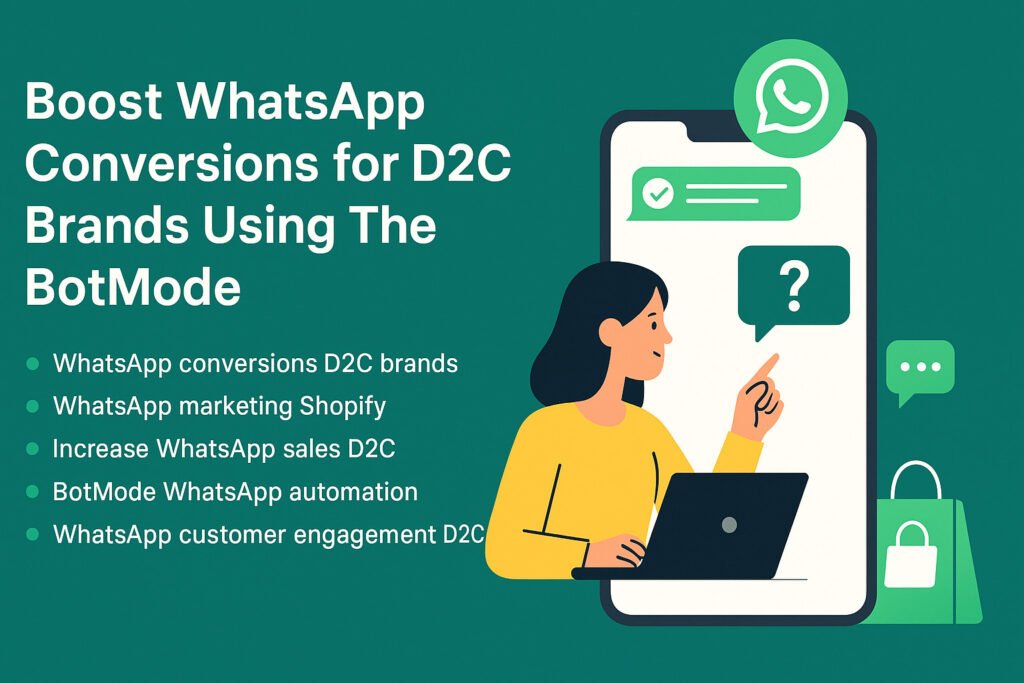
Introduction Direct-to-consumer (D2C) brands face fierce competition in eCommerce. With channels like email and social ads becoming saturated, WhatsApp offers a unique, highly personal way to engage customers. At The BotMode, we help Shopify and other D2C brands unlock powerful WhatsApp conversion strategies using smart automation, personalization, and seamless shopping experiences. Why WhatsApp Works for D2C Brands Key Strategies to Boost WhatsApp Conversions with The BotMode 1. Seamless Opt-in Experience on Your Store Place clear WhatsApp opt-in prompts on key pages like product pages, cart, and checkout. Offer value—such as early access, tracking updates, or exclusive offers—to motivate customers to subscribe to WhatsApp updates. 2. Automate Welcome and Abandoned Cart Messages Use The BotMode to trigger a friendly WhatsApp message when customers subscribe or abandon carts. Include product images, direct links, and a gentle nudge to complete their purchase. 3. Use Interactive Product Recommendations Leverage BotMode’s AI to analyze browsing or purchase history and suggest relevant products via WhatsApp. Interactive messages that ask a question like “Interested in complimentary products for your skincare purchase” can nudge conversions. 4. Send Order Confirmations and Tracking Updates Automate order confirmation, shipping and delivery notifications via WhatsApp. This improves transparency and builds trust without manual effort from your team. 5. Run Flash Sales or One-Time Offers Announce flash sales, limited-time deals, or product launches via WhatsApp broadcasts. Use urgency and exclusivity to drive quick responses and conversions. 6. Provide Instant Customer Support Enable a hybrid BotMode check-in where common FAQs are handled by bots, but escalations are quickly passed to humans. This hybrid approach ensures fast resolutions and helps drive sales. 7. Collect Post-Purchase Reviews and Feedback After delivery, send WhatsApp requests for reviews or feedback. Positive feedback can be directed to your site to boost social proof and repeat purchases. 8. Use Analytics to Refine Strategy Monitor open rates, click-throughs, and conversion rates from WhatsApp campaigns. BotMode analytics help you refine message timing, content, and frequency for optimal results. Real Results D2C Brands Have Seen FAQs What is The BotMode and how does it help with WhatsApp conversions? The BotMode is a WhatsApp automation and engagement platform designed for D2C brands. It helps automate messages like cart reminders, product recommendations, and order updates in a personalized, scalable way. Is WhatsApp marketing GDPR compliant? Yes. The BotMode ensures all WhatsApp communication adheres to GDPR, including collecting explicit opt-ins, providing easy opt-outs, and respecting user privacy. How do I collect WhatsApp opt-ins on my Shopify store? You can use The BotMode widget or banners on product, cart, and checkout pages offering something of value—like special discounts or updates—to encourage customers to subscribe. Can WhatsApp messages integrate with other marketing tools? Yes. The BotMode integrates with Shopify, CRMs, email tools, and analytics platforms so you can maintain a unified marketing view and automate across touch points. What kind of ROI can D2C brands expect? Results vary by brand, but popular outcomes include higher open and conversion rates, faster support responses, more recovered carts, and greater average order value from targeted upsells. Conclusion For D2C brands aiming to stand out in a crowded eCommerce landscape, WhatsApp offers an unparalleled channel for engagement and conversion. With The BotMode, you can automate, personalize, and scale powerful WhatsApp marketing that drives results.Start boosting your conversions today with smarter WhatsApp strategies for your Shopify store. Let me know if you’d like adjustments, specific examples, or coverage of other aspects like growth strategies or integration details.
D2C Brands: Switch COD Orders to Prepaid with WhatsApp
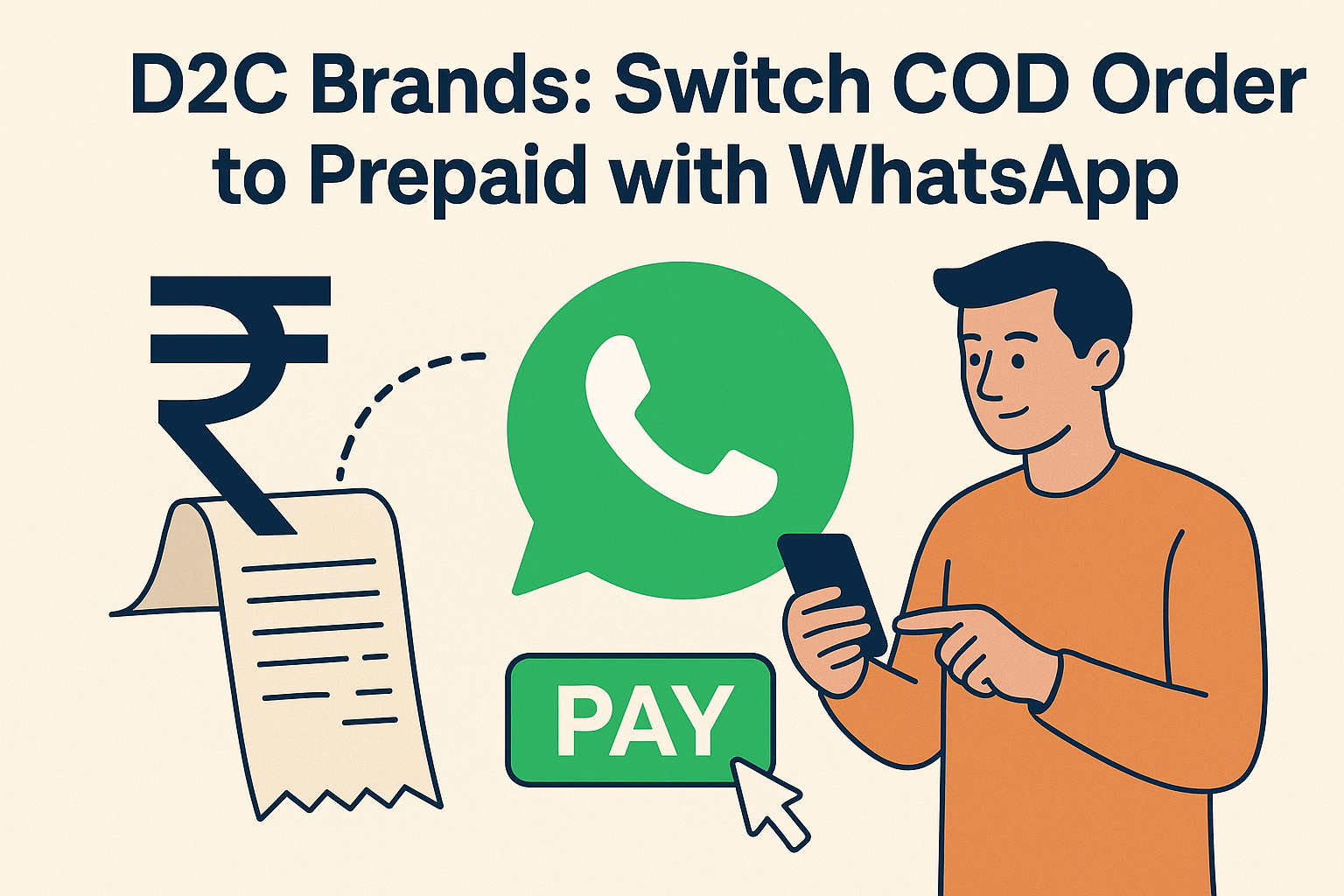
Introduction For most D2C brands in India and emerging markets, Cash on Delivery (COD) is still a dominant payment method. While it offers flexibility to customers, COD often turns into a liability for businesses due to high Return-to-Origin (RTO) rates, fake orders, and delayed cash flow. On the other hand, prepaid orders ensure faster payments, reduced operational costs, and better forecasting. The good news? D2C brands can now use WhatsApp Marketing and WhatsApp marketing automation to seamlessly shift COD orders to prepaid — without harming customer experience. The Challenges of COD for D2C Brands Why Prepaid Orders Are Better How WhatsApp Marketing Automation Converts COD to Prepaid WhatsApp has become the go-to platform for D2C engagement. With WhatsApp marketing automation, brands can create smart flows that nudge COD buyers to switch to prepaid instantly. Key Automation Tactics Case Studies: COD to Prepaid Success Metrics to Track Conclusion Shifting from COD to prepaid isn’t just about reducing losses — it’s about unlocking higher efficiency, better customer loyalty, and stronger cash flow. With WhatsApp marketing automation, D2C brands have a powerful tool to nudge customers naturally and at scale. The key is to experiment, measure results, and refine flows. Even a 10–20% increase in prepaid orders can dramatically improve margins and growth. FAQs: Converting COD Orders to Prepaid with WhatsApp Q1. Why should D2C brands move from COD to prepaid orders? Prepaid orders reduce RTOs, improve cash flow, and lower logistics costs. COD creates higher risks of cancellations, fake orders, and operational inefficiencies. Q2. How can WhatsApp marketing automation help convert COD orders to prepaid? WhatsApp automation sends instant COD confirmation messages, offers incentives, and provides direct payment links. This nudges customers to switch to prepaid seamlessly. Q3. What kind of incentives work best for COD to prepaid conversions? Popular incentives include small discounts (₹50–₹100), free shipping, cashback, or loyalty points. The goal is to make prepaid feel more rewarding than COD. Q4. Can WhatsApp be used for COD order verification? Yes. Brands can set up automated WhatsApp flows to confirm COD orders before dispatch, reducing fake or high-risk orders and lowering RTO rates. Q5. Do customers trust prepaid more than COD? When combined with transparent policies (easy refunds, faster delivery, payment security), prepaid often builds stronger trust. Customers appreciate the convenience and assurance. Q6. How much can WhatsApp automation increase prepaid conversions? Case studies show that D2C brands using WhatsApp COD → prepaid flows see a 15–30% boost in prepaid orders, depending on incentives and messaging strategy. Q7. Should D2C brands completely remove COD? Not immediately. COD is still preferred in some regions. Instead, brands should gradually incentivize prepaid while using WhatsApp automation to reduce reliance on COD.













